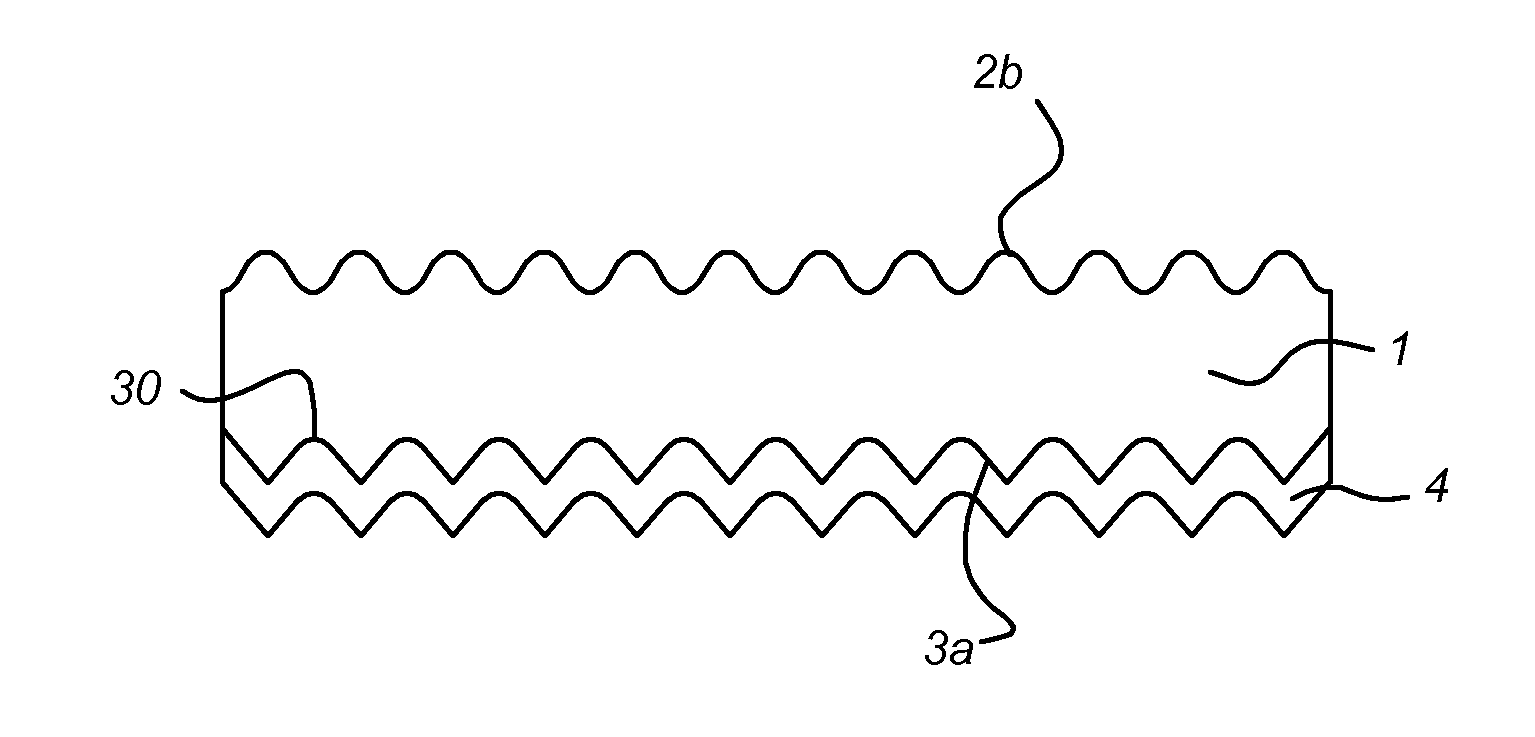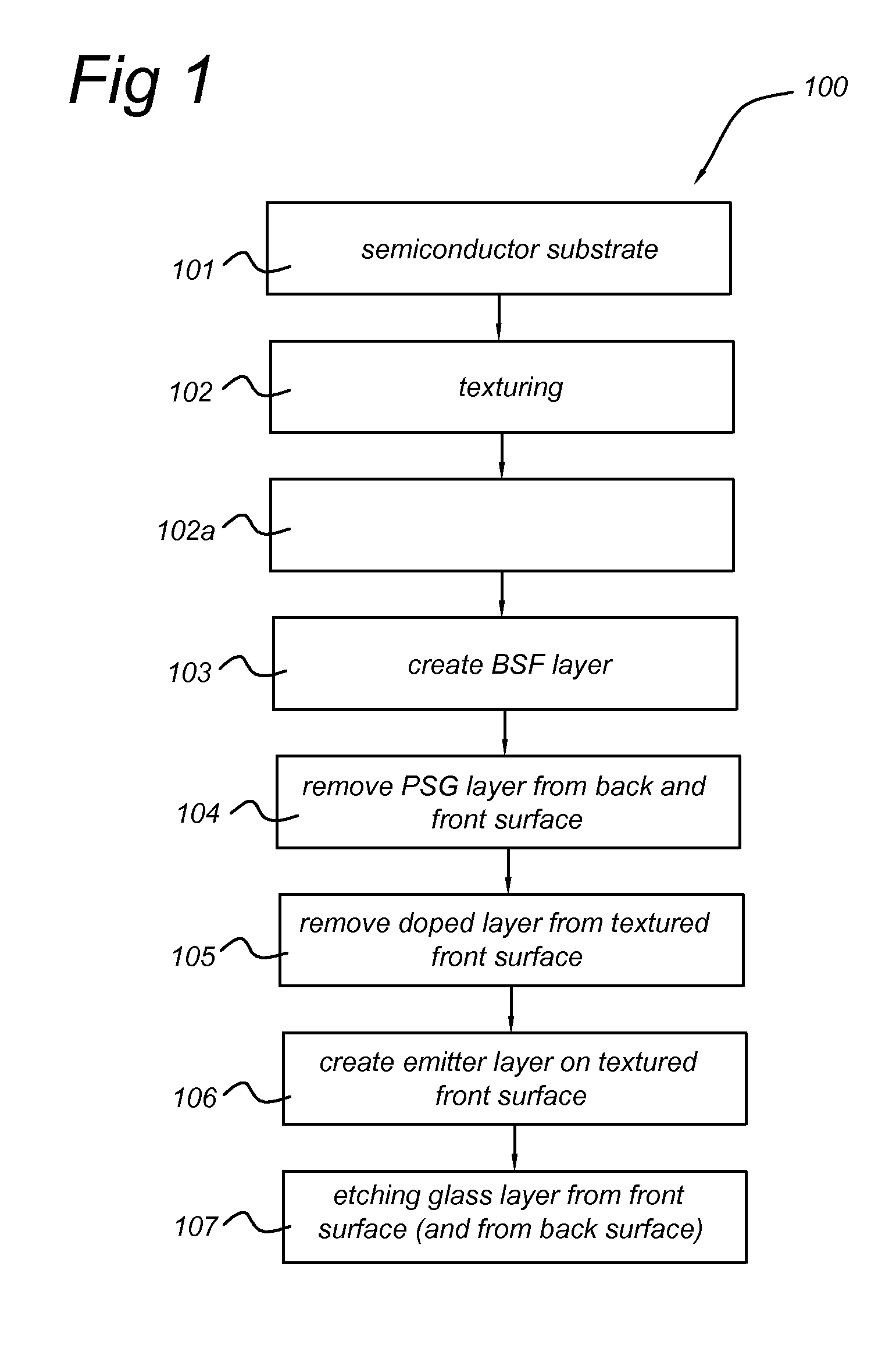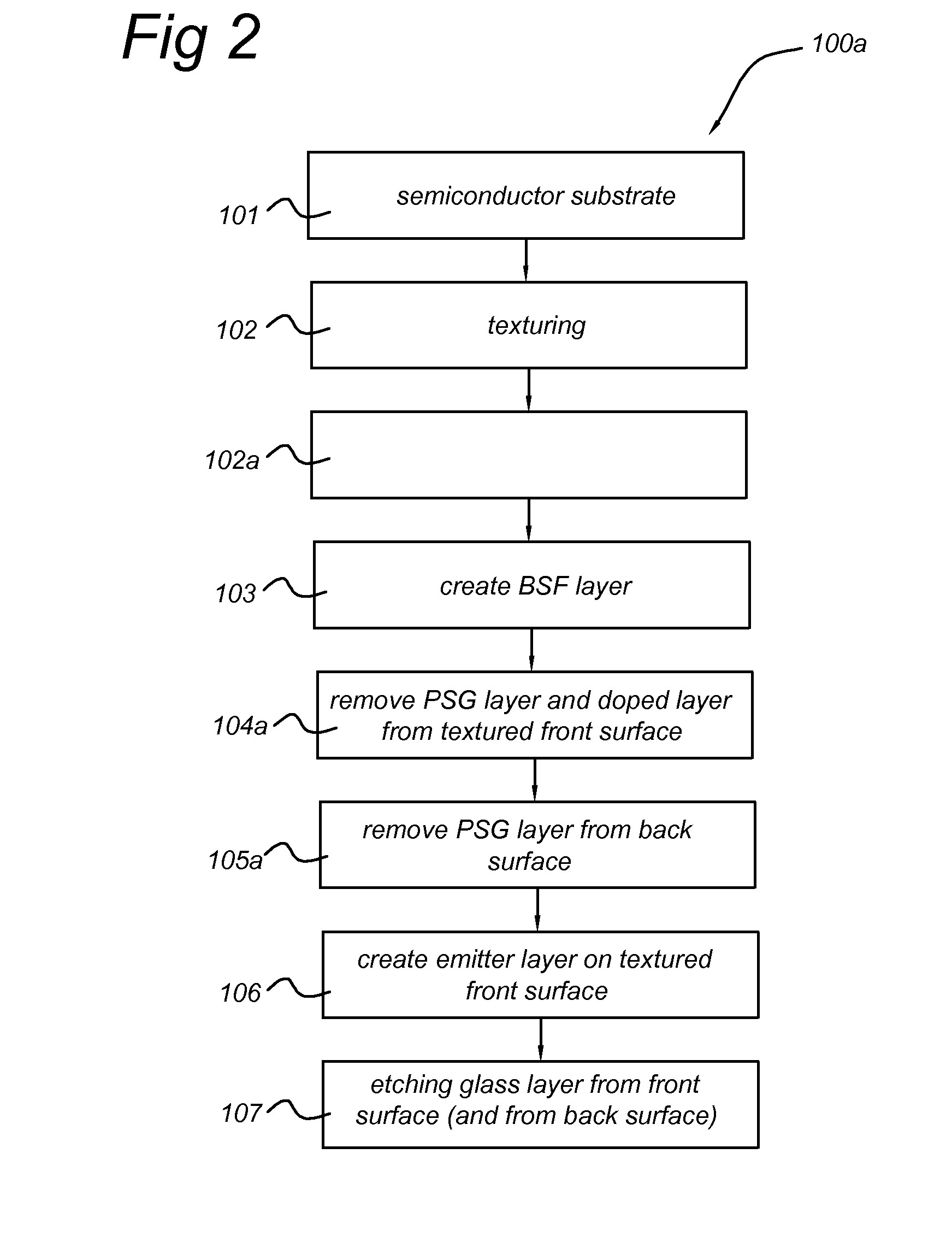Solar cell and method for manufacturing such a solar cell
a solar cell and manufacturing method technology, applied in the field of solar cells, can solve the problems of reducing the yield of the manufacturing process, adversely affecting the efficiency of the solar cell, and contaminating the front side of the substrate, so as to reduce the creation of defects, improve surface passivation, and reduce the effect of thermal budg
- Summary
- Abstract
- Description
- Claims
- Application Information
AI Technical Summary
Benefits of technology
Problems solved by technology
Method used
Image
Examples
examples
[0213]In an experiment, cells were compared from 3 groups of wafers with the following variation of processing: i) no step 102a, ii) step 102a with a partial smoothening resulting in a wafer thickness reduction >0.1 micron but <1 micron on average, and iii) processed with the same partial smoothening as ii), repeated 3 times total.
[0214]Both groups ii) and iii) showed an increase of 5 mV of the average open circuit voltage, with a statistical uncertainty (95% confidence interval) of 1 mV. The average short circuit current increased by 0.5% with a statistical uncertainty of 0.1%. This clearly proves that the rear surface passivation is improved by the partial smoothening.
no partialonce partialthree times partialsmootheningsmootheningsmootheningVocUo (referenceUo + 5 mV ± 0.5 mVUo + 5 mV ± 0.5 mVvalue)IscIo (referenceIo * (1.005 ± 0.0005)Io * (1.005 ± 0.0005)value)
[0215]In agreement with this, the external quantum efficiency measured with light incident on the rear surface of the cell...
PUM
 Login to View More
Login to View More Abstract
Description
Claims
Application Information
 Login to View More
Login to View More - R&D
- Intellectual Property
- Life Sciences
- Materials
- Tech Scout
- Unparalleled Data Quality
- Higher Quality Content
- 60% Fewer Hallucinations
Browse by: Latest US Patents, China's latest patents, Technical Efficacy Thesaurus, Application Domain, Technology Topic, Popular Technical Reports.
© 2025 PatSnap. All rights reserved.Legal|Privacy policy|Modern Slavery Act Transparency Statement|Sitemap|About US| Contact US: help@patsnap.com



